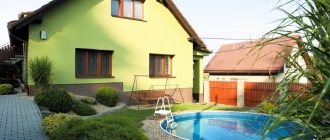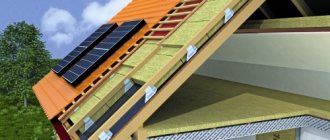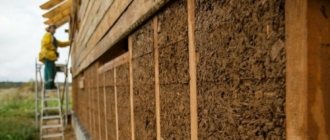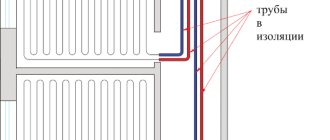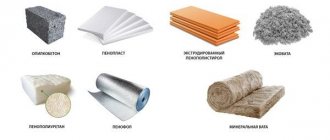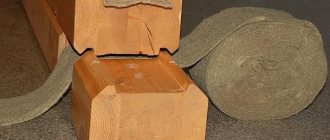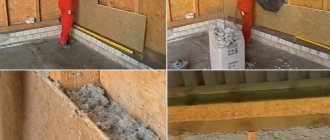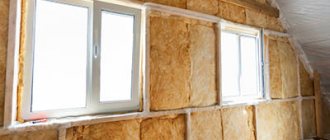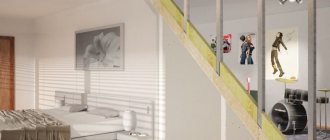Linoleum is one of the most popular floor coverings. Its popularity is largely due to the presence of many remarkable characteristics of the material, which include:
- high level of strength;
- ease of installation;
- wide range of colors.
Expert opinion
Konstantin Alexandrovich
Along with all the advantages that this material has, there is also a significant drawback: the material itself is not warm, and if it is laid on a concrete floor, the surface will be too cold. This means that if you choose linoleum as your floor covering, you will need to lay a special insulation underneath.
When is underlay needed?
Laying the underlay is necessary in the following cases: when the apartment is on the ground floor, the linoleum covering is concrete, the floor is uneven. The heat-saving substrate provides the following advantages:
- Improved sound insulation.
- Getting a warm coating.
- Leveling the floor.
- Insulation from moisture coming from the concrete surface.
- Increasing the service life of linoleum.
- Protection against deformation.
The underlay can be laid on any base - wood or concrete.
Natural materials
Natural thermal insulating substrates are made from the following materials:
- Rolled cork. This is a thin material made from balsa wood. It is mounted by gluing a concrete screed or by rolling: the unfolded coating at the joints is secured with tape.
Rolled cork - insulation for floors under linoleum
Cork insulation well insulates floors, provides warmth, and is resistant to moisture and mold. Due to its elasticity, the material protects linoleum from the appearance of dents from furniture legs.
- Jute backing is produced in rolls and consists of needle-punched jute fiber treated with a special fire-resistant and antiseptic impregnation. Advantages: hygroscopicity, noise absorption, hiding base irregularities, environmental friendliness. The material does not delaminate or crumble during installation. Service life 75 years.
- Linen insulation. This is a guarantee against the appearance of germs and mold, hypoallergenic and safe. Flax is very hygroscopic.
- Blended backing made of jute, wool and linen. Combines the properties of the materials already described and the warmth of wool. It has a high density, reliably covers the base and provides comfort.
The parameters of insulation made from natural fibers are given in the table.
| Substrate type | Thickness, mm | Density, g/m2 | Width, m | Roll length, m |
| Jute, linen, mixed | 3 | 450 | 1-2 | 10 |
| 4 | 550 | 1-2 | 10 | |
| 5 | 750 | 1-2 | 10 |
- Wood-shaving insulation.
They can be called conditionally natural, since other components are also present. There are several types of materials that can be used to insulate the floor.
Chipboard is the most budget option. The shavings are glued together using formaldehyde resin, which is a mass cut into sheets. The advantages are that the material is easy to cut and thin. The first disadvantage is that formaldehyde is present in the composition, but at normal ambient temperatures it is released in quantities that are safe for humans. The second drawback is poor retention of fasteners (screws and nails). It is securely attached only with dowels.
OSB board. Oriented strand board is made from wood chips. The fibers of one layer are located lengthwise and the other crosswise, which gives good strength. The advantages of the material are the smooth surface it creates. The average thickness of the slab is 12 mm. Sawdust may fall out when cutting. It is not moisture resistant and is therefore not recommended for laying on concrete.
Plywood is a dense glued material. It does not bend, the sheets are thick, they level the base well. The material is higher in moisture resistance than previous wooden surfaces, but still requires waterproofing when laid on concrete.
- Ecowool. This is a material that is rarely used on its own, but it is good in combination with others for laying between joists. The material is environmentally friendly, made of cellulose, breathable.
Ecowool - insulation for floors under linoleum
The general advantage of natural substrates is their composition, which is safer than synthetic insulation.
Famous manufacturers
Insulated linoleum from several companies is sold in the markets of our country. Let's list the most popular ones.
Tarkett
This manufacturer is a leader among companies involved in the creation of flooring. It has been producing a wide variety of flooring surfaces since the beginning of the 20th century. The quality of the product meets not only domestic sanitary standards, but also European ones. The company produces both felt-based and foam-based products. In addition, all material has a high fire safety class.
Linoleum Tarkett
IVC
This manufacturer produces its products in Belgium. His product has excellent characteristics and a unique design, so a room with such a floor looks very chic. Thermal insulation is provided in this case by felt. Therefore, the surface will not only be soft and warm, but you can also walk on it barefoot.
Linoleum IVC
Forbo
This company specializes in the production of eco-linoleum. Its products contain about 97% natural ingredients. One of the company's lines creates a cork-based coating. It not only perfectly prevents heat loss, but also blocks sounds. Other lines use jute for thermal insulation.
Linoleum Forbo
"Comitex Lin Parma"
The specialization of this enterprise is to create economy-class household coverings. The insulation in this case is felt. This linoleum is well suited for temporary housing or a summer cottage. Its price allows this.
Linoleum Komitex Lin Parma
Foamed polymers
Artificial materials include the following:
- Expanded polystyrene can be in the form of regular polystyrene foam or penoplex. The material is durable, insulates any surface well, and is safe – it does not emit harmful substances. The disadvantages of polystyrene foam are that it is flammable and does not allow air to pass through. Penoplex retains moisture well and is easy to lay, but can wrinkle if it is not thick enough and secured in place. The thickness of the foam varies from 20 to 150 mm, it does not wrinkle. Of the two types of polystyrene foam for the substrate, Penoplex is the best choice.
- Penofol. High-quality thin insulation with a foil layer. The environmentally friendly material is resistant to temperature fluctuations, does not allow moisture to pass through and is easy to install. Thanks to its reflective properties, it retains heat perfectly. Its thickness is from 2 to 10 mm.
- Liquid PPU insulation. A two-component mixture of isocyanate and polyol. Pros: adheres well to any surface, applied in a layer of any thickness, moisture resistant. Disadvantages - Requires a pressurized installation.
In addition to these materials, insulation under linoleum on a concrete floor can be made of basalt, mineral wool, foam chips and expanded clay.
Criterias of choice
For high-quality floor insulation, you need to select a material according to the following parameters:
- Deformability. The substrate should not dry out, warp or wrinkle over time from moving furniture or simply during use.
- Thickness. Thicker material is placed on the concrete floor, since the base is cold.
- Moisture resistance. The need for additional waterproofing depends on this.
- Environmental friendliness. Important for choosing a bed for a nursery or if you are particularly sensitive to polymers.
- Thermal insulation indicators. The criterion is important for insulating a concrete base.
- Easy to install yourself.
- Price.
- Quality and base material.
Indicators of fire safety, moisture resistance, and thermal conductivity are indicated on the packaging of the material. The main ones are given in the table.
| Name | Thermal conductivity, W/m*S | Density, kg/m3 | Vapor permeability, mg/ (m*h*Pa) | Flammability |
| Penoplex | 0,029-0,034 | 25-45 | 0,013 | G3-G4 |
| Styrofoam | 0,031-0,045 | 10-35 | 0,05 | G1-G4 |
| Mineral wool | 0,029-0,052 | 10-50 | 0,5-0,6 | G1-NG |
| Stone wool | 0,032-0,048 | 30-220 | 0,025-0,35 | NG |
| Expanded clay | 0,07-0,19 | 150-800 | 0,21 | NG |
| PPU | 0,023 | 350 | 0,02 | NG |
The indicators will help you choose the necessary material.
Insulation technology
You can insulate the floor using the selected substrate yourself by studying the installation procedure.
concrete floor
It is preferable to lay polystyrene insulation and plywood on a concrete floor.
Polystyrene insulation for concrete floors under linoleum
Laying the polystyrene foam backing is done as follows:
- The surface must be cleaned of dirt, debris removed, and any large protrusions knocked down.
- Place a layer of sand or expanded clay no more than 15 cm thick on the concrete, depending on the height of the ceiling in the room. Smooth out well.
- Lay slabs of polystyrene foam, penoplex, penofol. You can secure them together with construction foil tape.
- Install beacons to ensure even filling.
- Prepare a self-leveling concrete mixture for the screed.
- Fill the screed with a layer of 5-8 cm.
- Leave to dry for three days.
- After final hardening of the surface, it is necessary to evaluate its quality and remove possible irregularities.
- Lay linoleum.
When laying baseless linoleum, the floor will be hard, so it is better to choose a coating with a natural jute or foam base. It is better in quality and wear resistance.
The technology for laying the plywood backing will be different. Sequence of work:
- Wooden logs are laid on a concrete base at a distance of 300-600 mm from each other. The thickness of the timber is about 4 cm. They are attached to the base with dowels.
- Lay a layer of ecowool, mineral or basalt wool between the joists. They can be replaced with expanded clay and foam chips. Or cut polystyrene foam to size.
- You need to lay waterproofing material on top.
- Prepare the plywood by sawing it into squares or rectangles.
- Lay out the sheets with a small gap between them and up to the wall.
- Secure flush with self-tapping screws.
- The caps of fasteners and cracks are sealed with putty.
- After the putty has dried, linoleum is applied.
Wooden floor
Laying thermal insulation on a wooden floor or old parquet requires special preparation. First you need to mark the unevenness of the floor with a marker. These areas will need to be smoothed using a sander. Old boards need to be strengthened: punched with nails or fastened with self-tapping screws as often as possible. In this way, the creaking of the old floor is eliminated, and the boards are additionally connected to the joists. The fastener caps need to be recessed by 5-7 mm and puttied. Next, installation work is carried out in the following order:
- Lay sheets of insulation made from wood chips or natural materials on a layer of PVA glue.
- Glue the gaps with construction tape (if a natural substrate is used) or cover them with putty.
- If an environmentally friendly material is chosen, then you can immediately lay linoleum by welding its joints.
- When choosing wood insulation, it will need to be oiled. The decorative coating can be applied after the drying oil layer has dried.
Some owners choose a more difficult path - removing old boards. Then the procedure becomes more complicated and is similar to laying it on a concrete base. It is necessary to remove the old covering only if there is severe subsidence, rotting or broken boards. But in this case they can be partially replaced. You can try to knock down dried floors and place additional slats in the gaps.
To level and eliminate cracks, the method of tightening with gauze followed by painting is used. This option takes a long time to implement and is not practical.
When laying insulation on a wooden base, you need to remember that the height of the room will decrease and choose an option in accordance with the permissible minimum distance from floor to ceiling.
In total there are more than 200 products in the catalog
Bonding linoleum joints - analysis of methods
When buying linoleum, you should pay attention to its width. It's good if it matches the width of the room. In this case, it will be possible to lay linoleum without connecting the joints. Thus, the base will acquire an optimal level of sound and heat insulation, as well as tightness.
In a situation where linoleum has already been purchased, but its width does not correspond to the width of the room, the seams will need to be glued. This technology is suitable for both foam-based linoleum and warm varieties.
Welding of joints can be carried out using two methods: hot or cold. The latter can be done using a tube of glue containing tetrahydrofuran, plasticizers and chlorine.
cold welding for linoleum
Linoleum joints can be joined by cold or hot welding
The hot method involves the use of a hair dryer and wire, which must melt under high temperature. The resulting liquid mixture should fill the joints to create a tight and impermeable joint. This method is the best, but its implementation requires special equipment and skill in working with them.
The gluing procedure must be performed very carefully so that the melted glue does not drip onto the linoleum.
Before purchasing linoleum, you need to obtain information from the seller about how it can be joined. Many types of household coating cannot be hot glued, because the soft coating is not suitable for high temperatures.
Experts recommend using cold welding for residential premises
To perform cold welding you will need a ruler, masking tape, a welding tube, and a knife with a sharp blade. Let us describe the sequence of actions.
| Sequencing | Description |
Step 1 | Linoleum is laid joint to joint. In this case, you need to ensure that the connection of the canvases is very tight and the pattern matches. After this, the joints are connected using masking tape. For high-quality gluing, the seam should run through the center of the tape. Then an incision is made through the tape at the joint. |
Step 2 | Before applying the mixture, you need to carefully read the instructions. After opening the tube, a special needle is attached to it and placed into the incision. The joints are then filled by welding along the entire length of the seam. |
Step 3 | The gluing process must be carried out very carefully. If welding gets on an uncovered sheet, it will be difficult to remove it without damaging the surface. After 10 or 15 minutes, the masking tape can be removed. The welding will dry completely only after 2-3 hours. |
The hot method is more complex. To perform this, you will need to purchase a welding hair dryer with a special nozzle. In this case, instead of glue, you will need a special wire, which has a similar composition to linoleum.
When performing the work, in addition to the equipment, you will need a knife with a sharp blade and a vacuum cleaner in order to collect the remaining debris.
welding hair dryer
| Sequencing | Description |
Step 1 | Once the quality of the joining and alignment of the pattern has been assessed, it will be possible to trim the seam to a chamfer. Both a construction knife and a curved knife designed for joining are suitable for this. After this, you will need to collect all the garbage. The joints between the panels must be thoroughly cleaned with a vacuum cleaner. |
Step 2 | To operate, a hair dryer is heated to a temperature of 350 or 400 degrees. Then a nozzle is put on it and the wire is inserted. Carry out the first burning of the wire. |
Step 3 | After this, you can begin gluing the seams. The joints are filled with the compound along the entire length. |
Step 4 | When the seam dries, its remains are cut off with a knife. Special blades are sold for this. First, the most protruding part of the weld is cut off, and then the final trim is made flush with the felt surface. |
Which insulation is better to choose for linoleum flooring?
The modern building materials market offers a wide selection of insulation materials for linoleum .
The consumer can choose the appropriate option depending on individual preferences and financial capabilities.
When choosing, it is advisable to take into account which floor will be insulated - concrete or wood. Let's take a closer look at the main types of thermal insulation materials for linoleum floors.
Insulation under linoleum on concrete floors
Plywood . The most common and cheapest option for floor insulation. Fiberboard or plywood sheets are used.
Often used in old houses not only for thermal insulation, but also for leveling the surface. The material is sawn into several parts and attached to the concrete floor using dowels.
Cork insulation . One of the best insulation materials. Linoleum laid on such insulation is endowed with a certain softness and elasticity when walking. Considered the best choice for a children's room.
Electrical
Modern manufacturers of electrical equipment answer the question of how to heat the floor under linoleum. The desired microclimate is created not by retaining heat, but by additional energy expenditure. The cost of the device is determined by the complexity of the technology used.
Film heated floor
The heating element is produced in the form of sheets. The canvas is laid on a heat-reflecting layer and runs on mains power. Low-power thermal film (up to 150 W/m2) continuously maintains a comfortable floor temperature and prevents overheating.
Infrared
Transparent polyester fabric is fire resistant and moisture resistant. The heating element is mounted directly under the linoleum without the use of cement or putty. This type of insulation is recommended for loggias, where it is effective and safe.
Infrared film floor
Electric
This heating method is suitable for any type of flooring except parquet. Heating cables are laid on the thermal insulation material, and a thermostat is mounted against the wall. The entire system is connected to the electrical network. After the inspection, the structure is filled with cement and linoleum is laid.
Types of substrates
To insulate the floor under linoleum, you first need to select a substrate. There are several types of such material. Here are the most popular:
Let's look at each separately.
Cork backing is made from compressed crushed cork oak bark. This insulation is produced in rolls. The advantages of this material include:
- environmental friendliness - made from natural cork;
- There is a pleasant feeling when walking on this surface, as it is quite soft.
It is precisely because of the last positive quality mentioned that a problem may arise: if you place a heavy object on the coating, then after some time dents may form on it. To avoid this, you should choose the hardest cork backing.
Jute backing is a material consisting of 100% natural jute fiber. It is made as follows: jute fibers are punched with a needle, then rolled on rollers under high temperature. This substrate is fire resistant, resistant to mold and rot.
Linen backing is 100% pure natural linen. It is made by double-piercing with a needle and then impregnated with anti-fire and anti-fungal agents. Linen backing is a good material for thermal insulation under linoleum.
Types of insulation
You can use the following types of insulation to insulate the floor under linoleum:
Penoplex insulation
stands out for its durability and long service life. This material is often used to insulate various surfaces. The thickness of these slabs is small, so the floor level rises to an insignificant height (for more details: “How to insulate a floor with penoplex - proven methods”).
This insulation for linoleum on a concrete floor has a significant advantage - it is easy to install; if necessary, it can be cut with an ordinary knife. It is the most popular among insulation materials; floor insulation in a private house is most often done with this material.
Izolon
– This is polyethylene foam with a closed cell structure. Has excellent characteristics:
- high thermal insulation rates;
- vapor barrier qualities;
- waterproof;
- safe;
- durable.
In addition, the cost of isolon is low.
There are two types: non-foil and foil insulation under linoleum.
How to insulate a wooden floor step by step: expert advice
To comply with the technology, it is worth understanding the step-by-step description of the process; it is not complicated, but requires strict adherence to ensure the best effect. Professionals perform thermal insulation work as follows:
- Prepare the base, first you need to make a subfloor, if there is none. They use an unedged board, it can even be nailed with slots, it doesn’t really matter.
- Then you should lay the waterproofing, and lay it in such a way as to cover the joists. The easiest way to secure material in niches is to use a construction stapler. Make overlaps of at least 10 cm at the joints and seal the joints with tape.
- Place mineral wool in the niches as densely as possible. Cut soft mats 2-3 cm larger to push them in. Rigid slabs should be cut precisely and laid so that there are no voids.
- Place a vapor barrier membrane on top and secure with a stapler, not forgetting to glue the connections.
Insulating the floor in a wooden house is not difficult if you follow the recommendations from the review. First you need to select the optimal insulation, and then lay it according to technology. The work is best done during the construction or major renovation stage.
Insulation technology
Before laying insulation under linoleum on a wooden floor, you should prepare all the required materials and tools.
To work you need:
- insulation isolon or penoplex;
- backing for linoleum made from natural materials;
- sheets of plywood or fiberboard;
- polyethylene film;
- scotch;
- materials for fastening (screws, glue);
- screwdriver;
- knife;
- scissors;
- jigsaw
After this, you can proceed directly to the insulation process:
- First you need to inspect the surface under the top layer of flooring. To do this, you need to remove it. If the boards are good, then insulation can be done from this level.
- The substrate is laid. It is better to make a choice in favor of natural materials, as they are safer. However, there are also disadvantages here: such substrates may quickly wear out and insects may appear. Also, when choosing a substrate, you need to take into account its thickness, so that it does not work out, so that because of it the floor level will rise so much that it will be impossible to open the door.
- To avoid problems in the future, Izolon or penoplex is laid on top. All existing sheet joints must be glued together with construction tape.
- The next layer is laid plywood sheets or fiberboard. Next, everything needs to be secured using self-tapping screws.
- If fiberboard is selected, waterproofing should be done to prevent it from swelling. To do this, first a plastic film is laid down, then fiberboard is laid on top, which needs to be primed, and the film is laid on top again (for more details: “How to lay fiberboard on the floor under linoleum correctly”).
To prevent water from getting onto the lower layers of the floor, you should choose rectangular-shaped plinths for linoleum.
Subtleties of styling
For this purpose, special polymer mixtures with reinforcing optical fiber are used as a substrate. This method is used when it is necessary to save more space in the room. The solution can be applied in several layers, using a special impregnation before each layer. Do not use mixtures based on gypsum or cement. Due to the properties of wood, changing its density under the influence of external factors will not result. If the floor has minor defects, it is enough to use a foam backing. This is the fastest, cheapest and easiest method.
A slightly more labor-intensive and inexpensive method is to nail down fiberboard sheets. You can level the base with plywood, chipboard or OSB boards of the third or fourth category. It must be taken into account that when wet and then dry, chipboard and fiberboard change their shape, which is not restored. Therefore, they are used in dry rooms where there is no running water.
